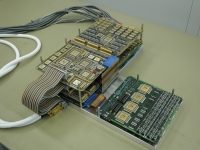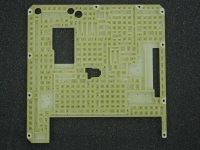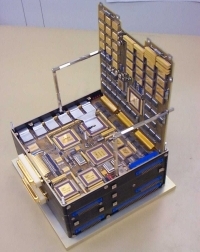Optical, Spectroscopic, and Infrared Remote Imaging System
Scientific Objectives
The investigation of the nucleus itself requires high spatial resolution over a wide wavelength range but with modest spectral resolution. The investigation of the innermost dust and gas coma requires a wide field of view with a selection of narrow band interference filters to image the 2-D gas distribution. OSIRIS consists of two cameras:
- Narrow angle camera (NAC) with a 2.4×2.4° FOV
Wide angle camera (WAC) with a 12×12° FOV
OSIRIS was pre-selected as a PI instrument in April 1996, to be provided by a European consortium under the leadership of Dr U. Keller (MPAe, Lindau, Germany). Following funding difficulties for the original consortium, ESA was asked to participate in the development of the Data Processing Unit (DPU). The Solar System Division accepted this challenge because its participation in OSIRIS is an important step for future scientific expertise in planetary imaging.
The request to provide the OSIRIS DPU was implemented in the design and development phase by a joint venture between the former Technical and Operational Support Directorate (Payload Systems Division) and the Science Directorate (Solar System Division). This partnership provided the opportunity to direct the development of an onboard payload data processor within the ESA Technological Research programme (TRP) to a specific, real application, thus providing a cost-effective contribution to the Rosetta instrumentation.
Payload
 |
 |
|
OSIRIS DPU Flight model, board level test at EADS/ Astrium |
Stiffener plate for DSP circuit board, needed for improved mechanical stability |
 |
|
OSIRIS DPU flight model, pre- integration |
The Solar System Division provided a total of 3 fully-equipped "elegant breadboards" for system testing during the development phase. Furthermore, one qualification and 2 flight models were produced and delivered to the PI institute.
The hardware was delivered with an industry-standard real time operating system (VIRTUOSO) and specific low level device drivers.
Performance Specifications
- Power consumption: 8W (compressing and transferring data at max. rate) 3.5W (low power mode)
- Total mass: 1.4 kg (electronic boards, excl. housing)
| Item | Specification |
| Central Microprocessor | Rad-hard Temic processor TSC21020, 20 MHz, 60 MFLOPS, data transfer speed from DSP memory to mass memory > 38 Mbps continuous |
| Mass Memory | 4 Gbit netto DRAM- based |
| Program Memory |
|
| Local Data Memory |
|
| Digital Interfaces |
|
| Redundancy | DSP board, S/C-interface: Dual cold redundancy Mass memory board: Graceful Degradation |
| Protection Against Single Event Radiation Effects |
|
| Power Management | Low-Power Mode (program SRAM de-select, partial clock disabling) |
| Operating System | Standard Real Time Operating System (Virtuoso) |
Collaborating Institutions
- The electronic boards of the DPUs were designed and manufactured under the responsibility of Astrium GmbH, Ottobrunn, Germany
- Rosetta was launched in March 2004. First OSIRIS images were received during the commissioning phase in May 2004. They demonstrate the flawless performance of cameras and DPU.
- Key SCI-SO personnel: P. Wenzel (lead, 'double- CoI'), U. Telljohann (technical manager), D. Koschny (deputy), B. Johlander (components procurement)
